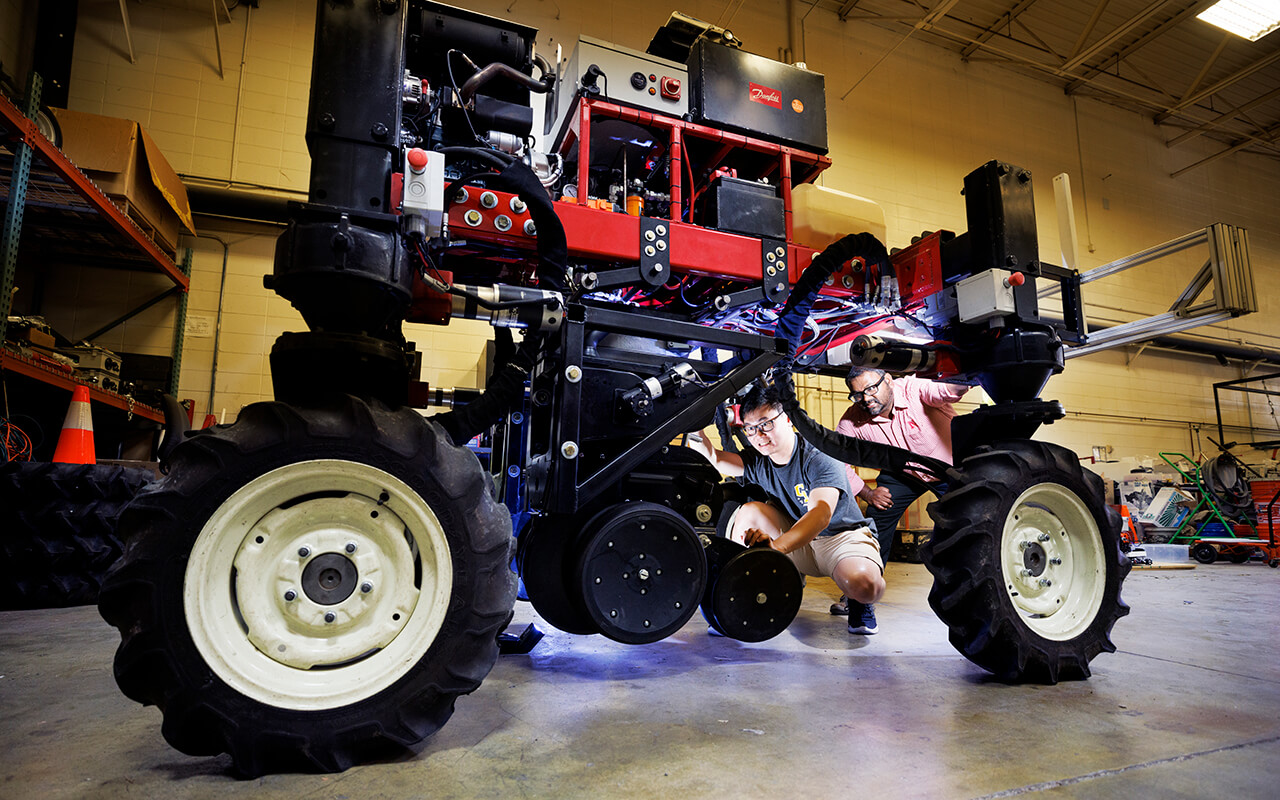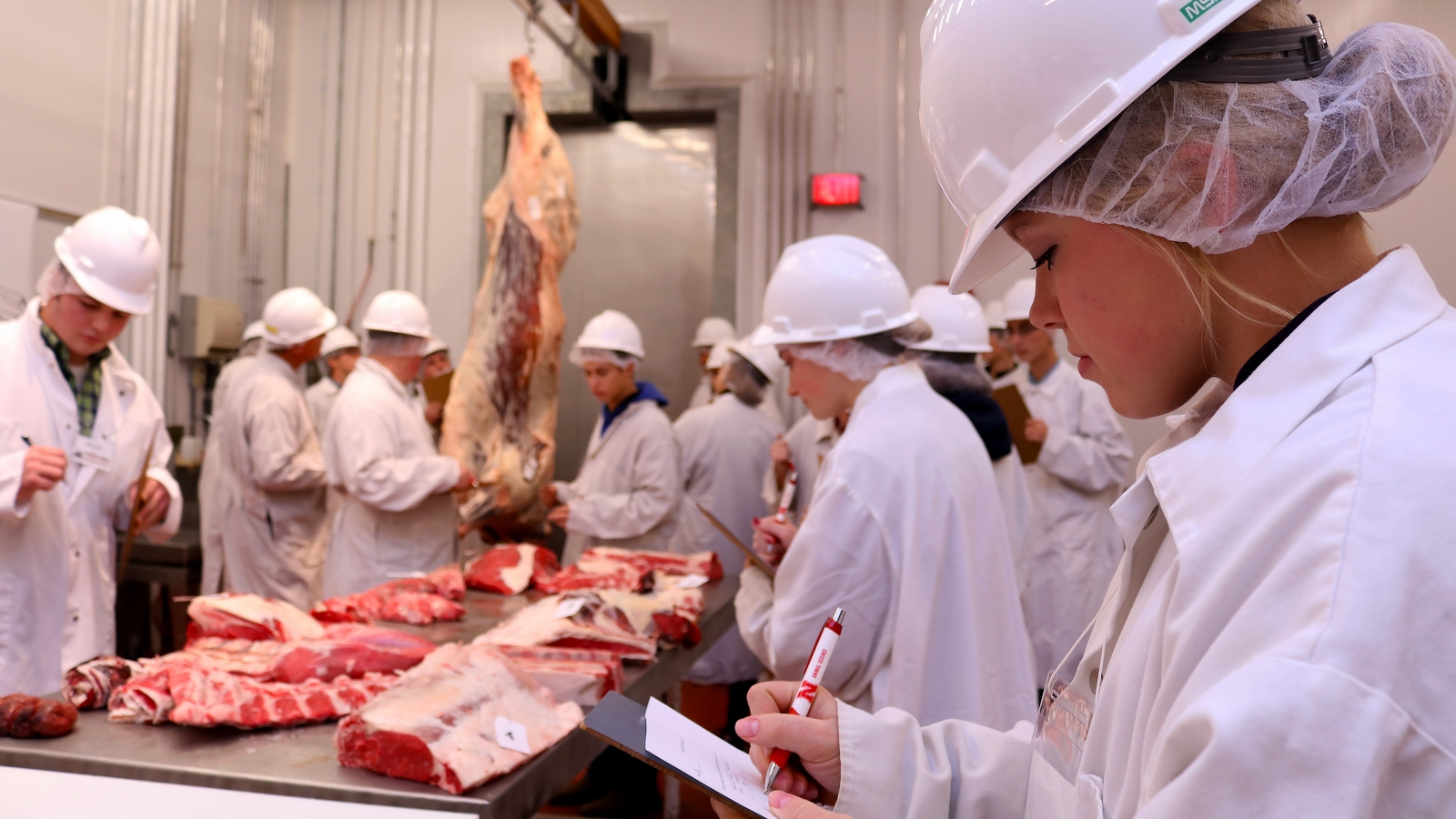The University of Nebraska-Lincoln has long been an innovator in the area of meat science. Dr. Rodger Mandigo developed the technology that led to the famous McRib sandwich and the flat iron cut of beef was discovered in a collaborative research project by Nebraska's Dr. Chris Calkins and the University of Florida. Our meat science research ranges from animal growth and development, through fresh meats and processed/manufactured meat products.
Explore Our Labs
Morrill Research Laboratory
The mission of the Morrill lab is to be at the forefront of scientific discovery for the betterment of both animal and human health. With a specialized focus on beef cattle production and quality and nutritional value of meat, we are dedicated to conducting groundbreaking research that not only enhances the sustainability of beef production, but also contributes to combatting obesity and promoting healthier lifestyles in humans. Through our discoveries, we aim to positively impact the agricultural industry, improve human nutrition, and foster a healthier future for both animals and humans alike.
Ongoing Research Projects:
Pre-Harvest Research to Improve Meat Quality and Quantity
- Utilizing the NUtrack Livestock Monitoring System* to improve production efficiency of livestock.
- Development of the NUtrack Livestock Monitoring System is a collaborative effort between the Department of Animal Science (Ty Schmidt and Benny Mote) and College of Electrical and Computer Engineering (Eric Psota)
- Non-evasive prediction of changes in body weight and estimation of body composition of beef cattle and swine prior to harvest
- Utilization of the NUtrack System to accurately determine head count of swine at the point of shipment and upon arrival at the abattoir.
- Accurate and rapid Identification of health compromised animals and aggressive/damaging behaviors.
- Understanding the physiological, molecular, and whole animal response associated with ß-adrenergic agonist supplementation and stress.
Product Research
- Exploring dry-aging. There are many beliefs about the process that are proving to be incorrect.
- Identifying ways to make new and better products with enhancement strategies such as pre-marinated beef, investigation of ingredients and effects on tenderness, taste, and color.
- Evaluating the nature of flavor (and off-flavor) in beef.
- Determining the impact of distillers grain on meat characteristics such as marbling and flavor is being evaluated.
- Developing understanding of the impact of HACCP food safety interventions on meat product quality.
- Investigating the impacts of oxygen level of color of frozen beef as it is critical for frozen meat sales.
- Investigating how to reduce microbial spoilage through ingredients, packaging, and processing technologies to reduce food waste and food loss.
- Conducting collaborative research on the application of high-pressure processing to improve the safety and shelf life of meat and pet food products while maintaining product quality.
- Assessing natural or clean label ingredient technologies and their impact on product quality and safety to address consumer trends.
- Researching sous vide cooking to provide guidance to ensure product safety as it is growing in popularity.
Research Directly Tied to Beef Production
- Evaluating the recent FDA approved growth enhancement, optaflexx. This growth enhancement technology improves feed efficiency with minimal changes in tenderness or taste of beef.
- Investigating the impact of oxidative stress on meat. The biochemistry of postmortem events might help explain differences in the tenderization process among animals.
- Exploring nanotubes as a means to evaluate the status of oxidative stress in animals in near-real time. This is a new application of the technology that has never been done before.
Meet the Faculty
EMERITI: Dennis Burson, Chris Calkins, Steven Jones, Roger Mandigo
Agricultural Research Division
Supporting the Science to Ensure Resilient Food Systems and a Healthy Global Future
Through the dedicated and innovative work of Faculty and Staff based in 15 Academic Units across the Institute of Agriculture and Natural Resources (IANR) and College of Human Sciences, the Agricultural Research Division is able to help address the grand challenges of global food and water security by working to answer questions important to Nebraska and the World.




